My personal favorite was their Pro iCAN headphone amplifier. Powerful, full-featured, and sounds great. Check out my other iFi reviews here.
Build & Features
One characteristic about their previous portable DACs I can’t seem to get over – is their rigid, blocky, ad-hoc designs. It’s not the prettiest – nor the most portable.
This finally changed with the release of the
Notable Features:
- DSD512
- MQA support
- Balanced 3.5mm compatibility
- Powerful “Cyberdrive” output stage
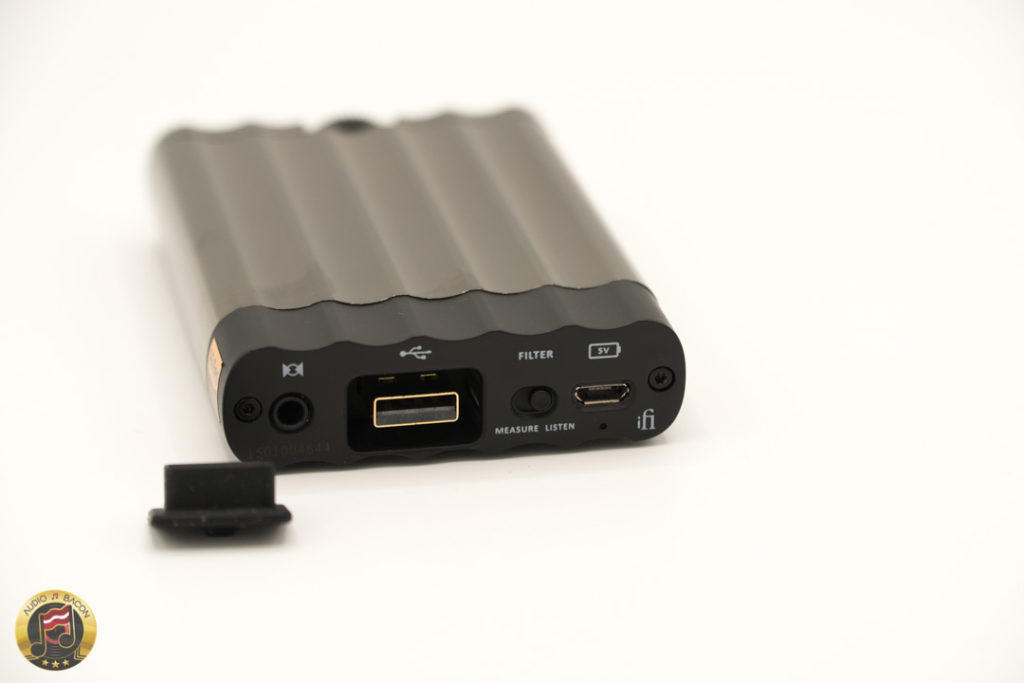
Interface
Another thing about their previous DACs is the sheer amount of switches and buttons. Luckily, the
There’s also a filter switch. The differences between “measure” and “listen” are subtle but audible. The “listen” mode has more treble shine, faster leading edges, and overall more dynamic sound. The “measure mode” is more mellow – and slower. In ways, it’s more neutral as well.
Moving to the front and all we have is a dial (which serves as the power and mute button), a 3.5mm headphone jack, and a settings button (for 3D+, XBass+, and Bluetooth pairing mode). The color of the dial indicates the volume level. When held on boot, it’ll change from two modes: green for wired mode and blue for Bluetooth.
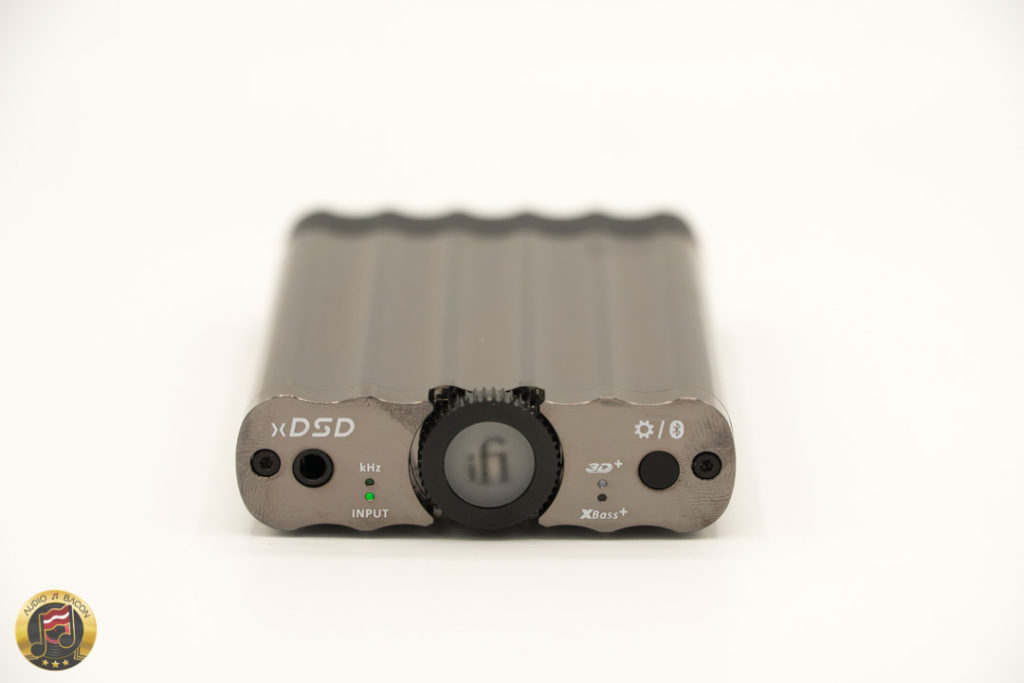
Bluetooth Mode
Comparing between Bluetooth and wired mode on my Pixel 3 phone and Macbook, the differences were quite stark. To the point where – if you know of a reviewer who can’t hear the difference – I would question their credibility. I’m dead serious.
The Bluetooth mode is far flatter sounding with a greyed out tone and smoothed over textures. All spatial information is lost and it just sounds bland.
Just to be clear, this is just the current state of Bluetooth audio – not the fault of the
3D+ and XBass+
Both of these modes do what you’d expect but I had them both off for most of my listening. I think it sounds very well-balanced without any of these enhancements turned on. XBass+ does give some decent fill to the bottom though so I’ll occasionally turn that on.
Battery Life
It takes about 3.5 hours to fully charge the
I do most of my listening around the high “yellow” area – which is about 80-90%. This nets me about 6 hours of battery life – which is the most amount of time I would spend working at the Starbucks Reserve anyway.
Alright, I’ve gone over the important functions. If you’re looking for more specs, please check out the product page here. We’re just going dive in here.

The Sound
I used a pair of Sennheiser HD650s and Audeze Sine for this evaluation. The
Test Tracks
- Howlin’ for You – The Black Keys
- Life Worth Living – LAUREL
- Duende – Bozzio Levin Stevens
- Carnival – Natalie Merchant
- Florida University – The Dream
- Perfect for Me – Ron Pope
Most of
The sound is denser, smoother, with an impeccable sense of acoustic space. I was also immediately engaged by the iFi xDSD’s ability to image and layer out the musical elements. Instead of being piecewise, the
The
There does seem to be a roll-off at the top, however. Bells don’t quite fully ring out and cymbals don’t splash with brilliance. But if the aforementioned traits had to be forfeited for more shine – I wouldn’t have it any other way.
The tonality of the
It has cleaner shades of grey rather than being orange and red in blood flow. In short, it’s a cooler more relaxed tone.
vs. Chord Electronics Mojo ($539)
The
One thing the Mojo clearly does much better is the treble. It has a proper amount of metallic shimmer and air. The
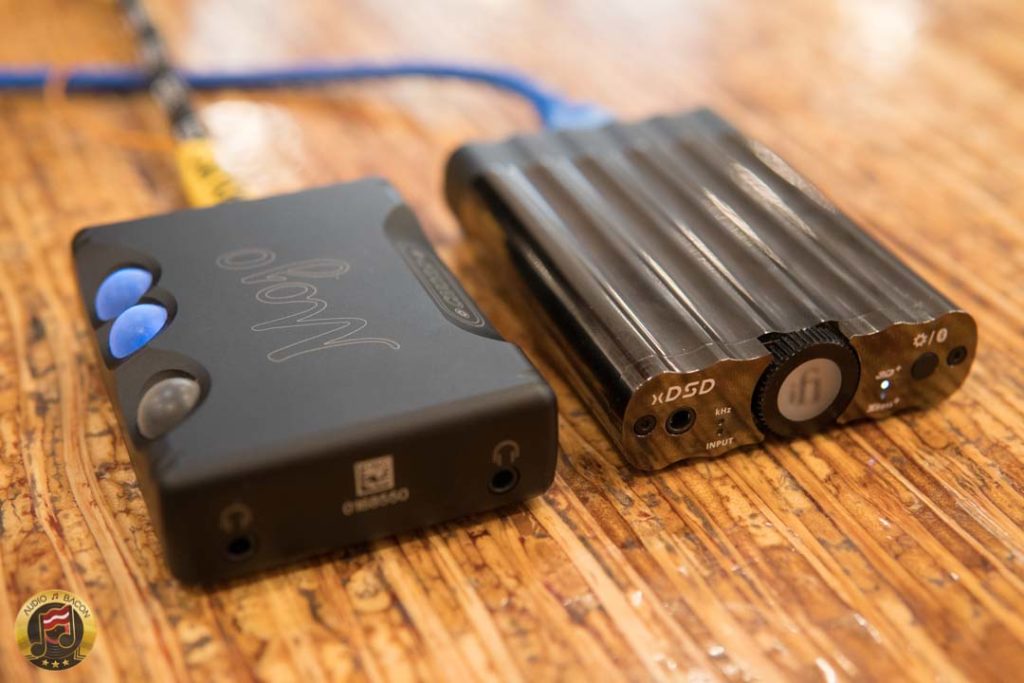
As alluded to earlier, another thing the Mojo does better is tonality. The
One thing to keep in mind is that the Mojo won’t have the Bluetooth capability unless you purchase a Chord Electronics Poly. If you’re planning to go wireless most of the time – then the iFi xDSD is more sensible.
Truth be told, when I’m not listening critically, both of these DACs will get my head bobbing and feet moving. The only real thing I could dock the
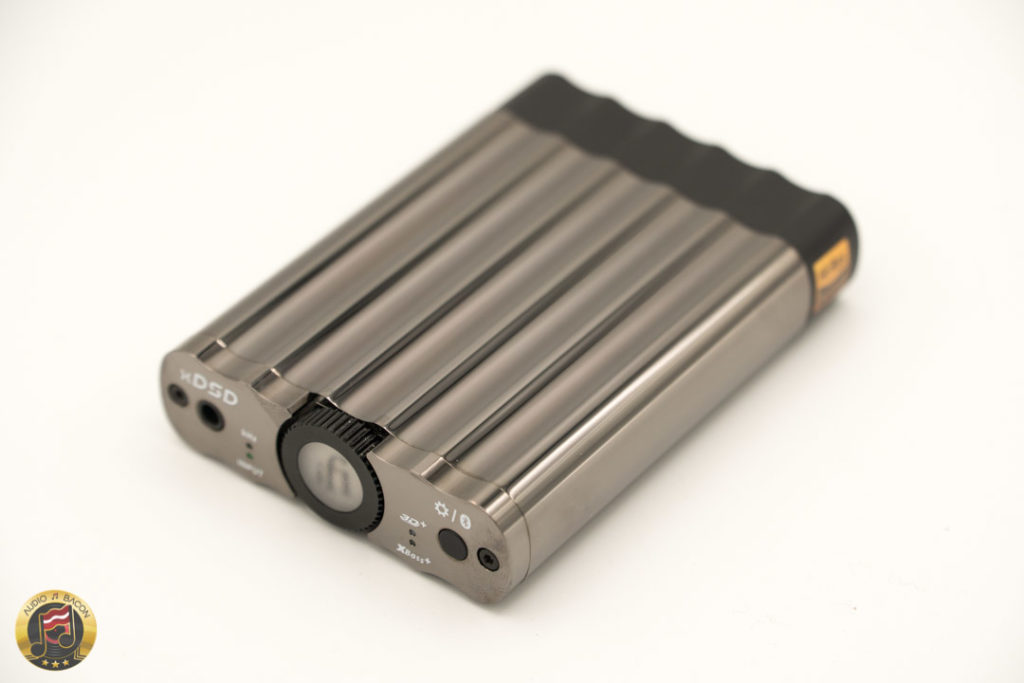
Final Thoughts
These days, I find myself just throwing the iFi xDSD in the bag and jamming. I know I’m going to be listening to something much better than what I could get from my laptop or phone. It’s also powerful enough to drive any headphone or earbud I would bring out with me.
When you combine the great sound, practical features, and a beautiful form factor – the iFi xDSD is one of the best bargains out there. It’s currently my favorite from their line of portable DACs.
Purchasing: iFi xDSD Portable DAC/amplifier ($399)




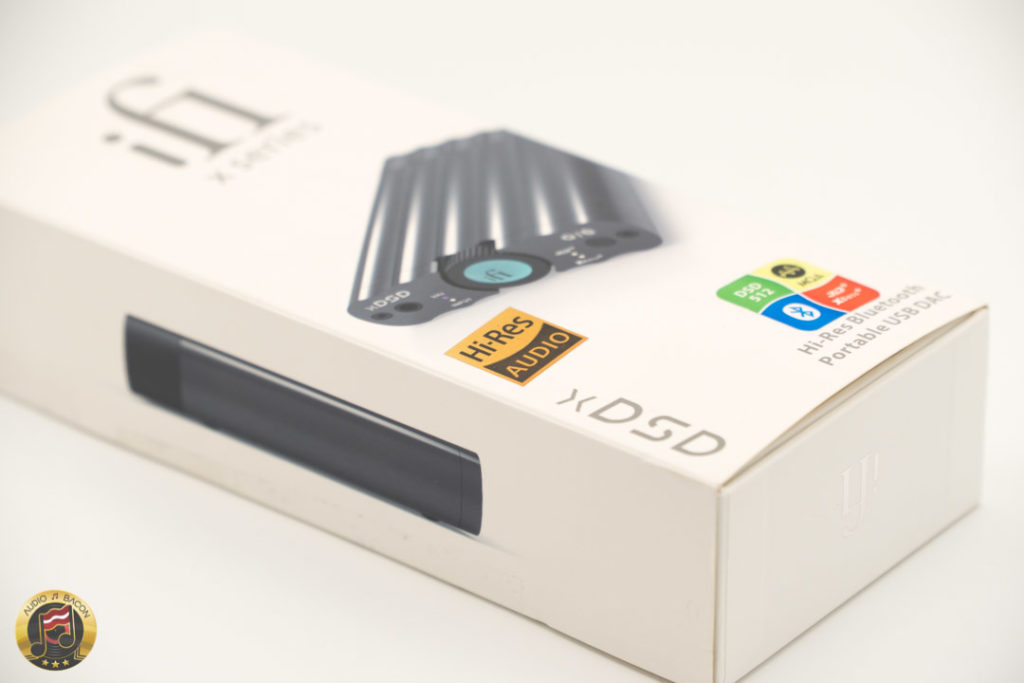
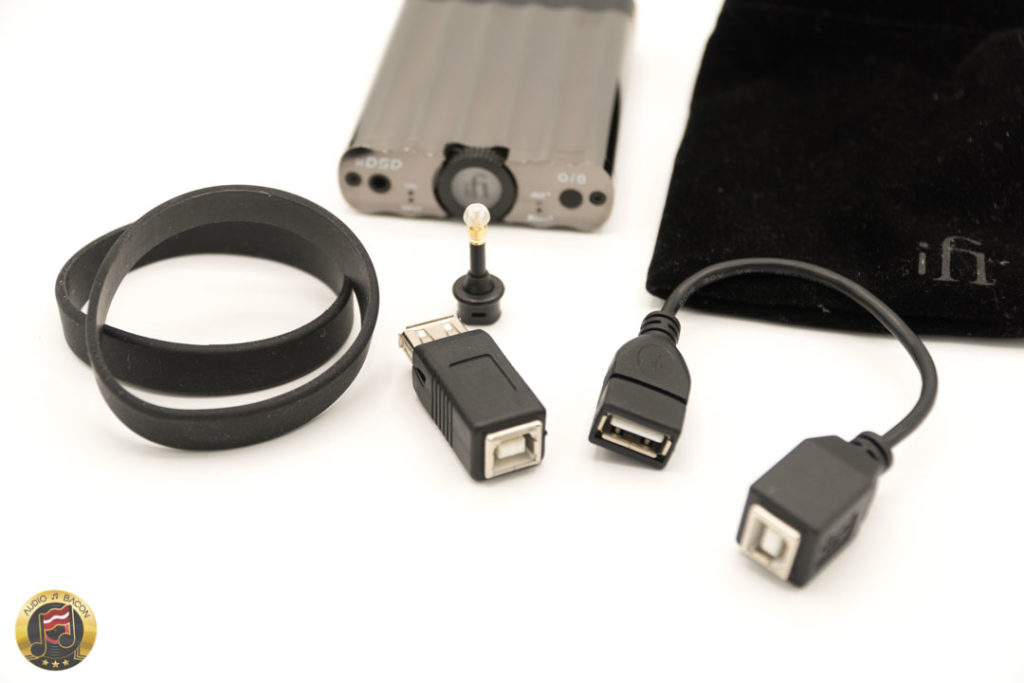
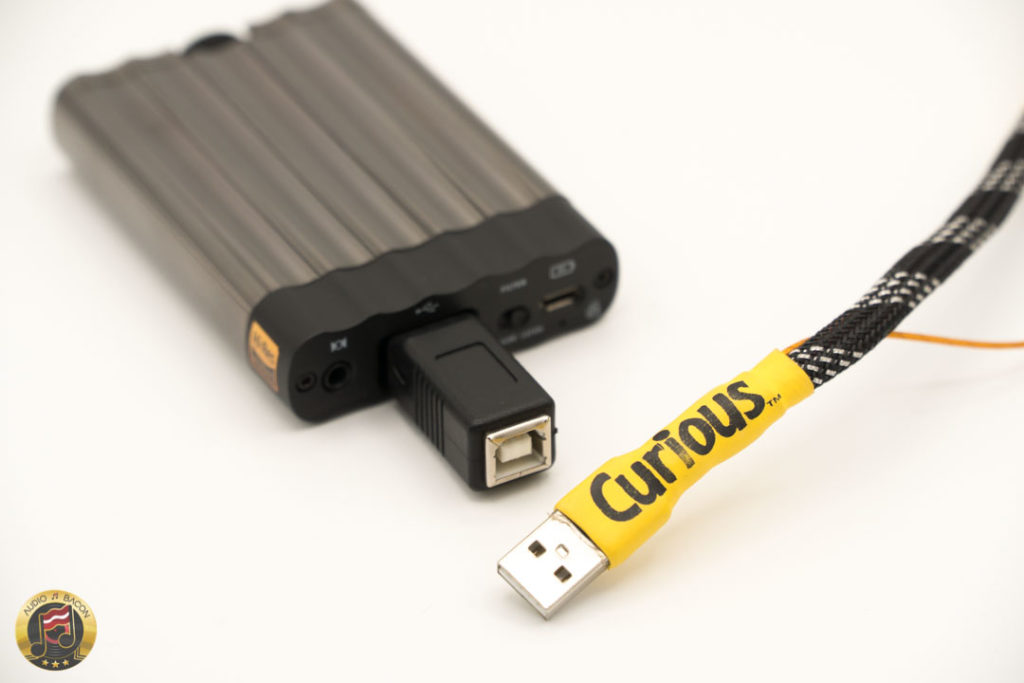
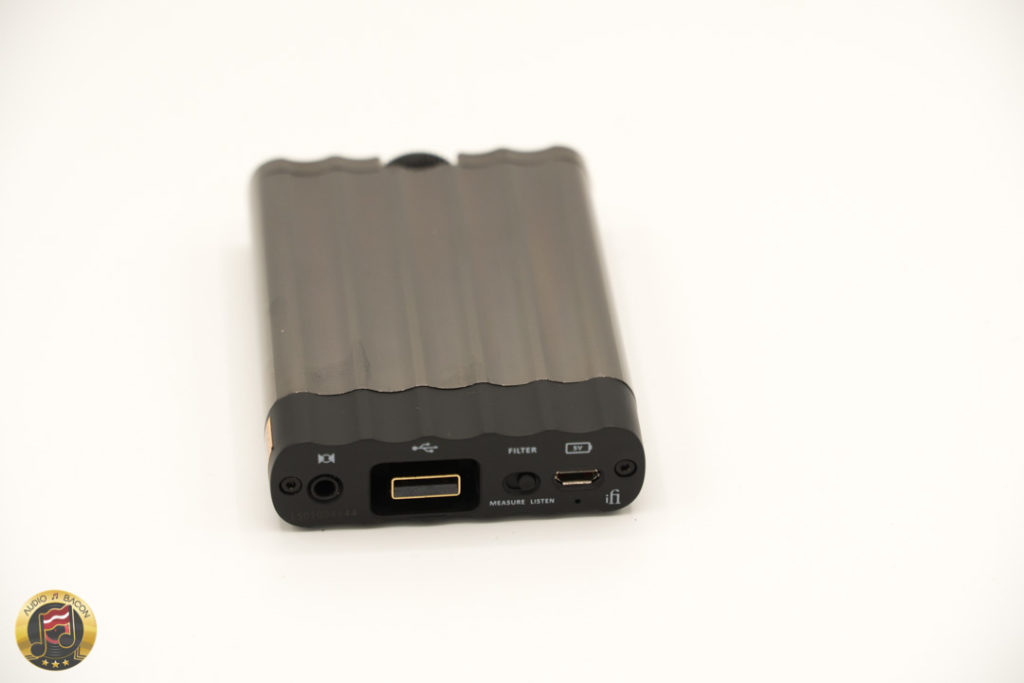

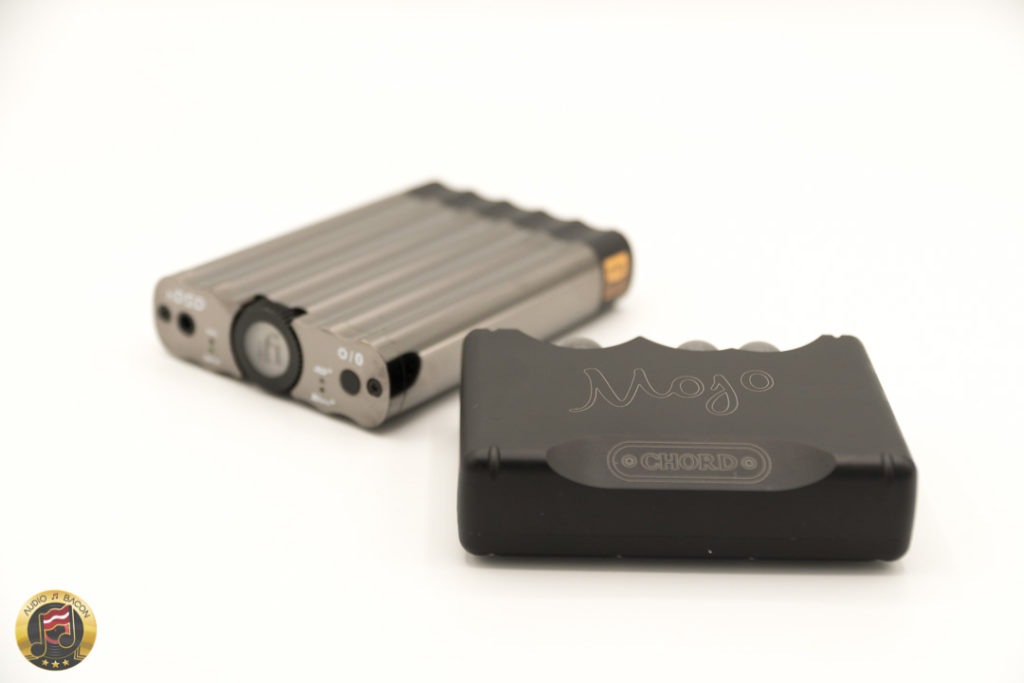
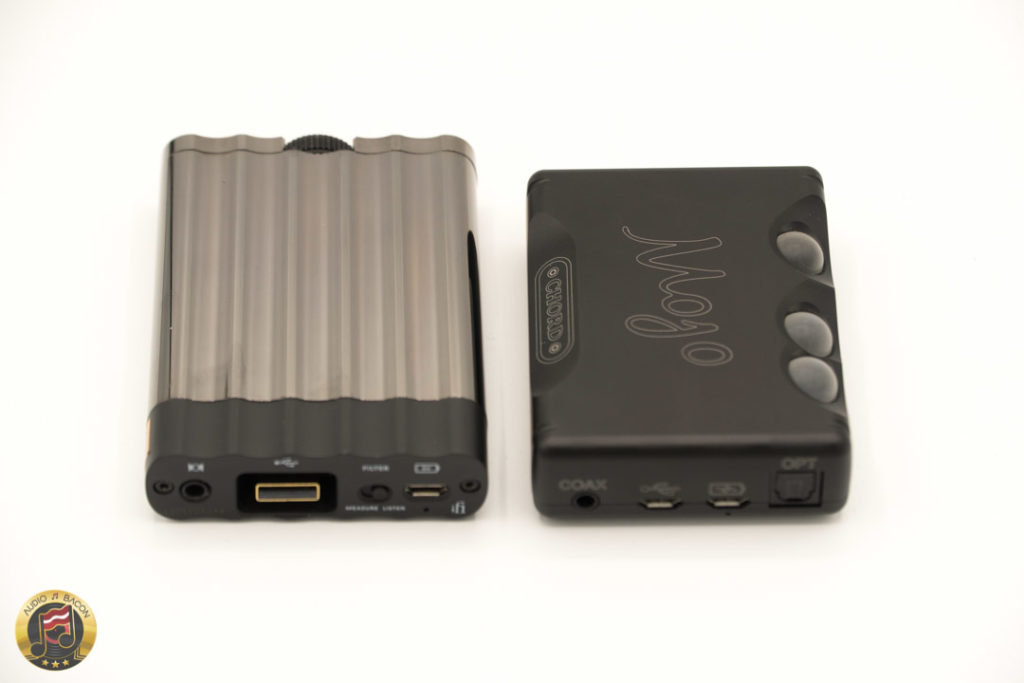
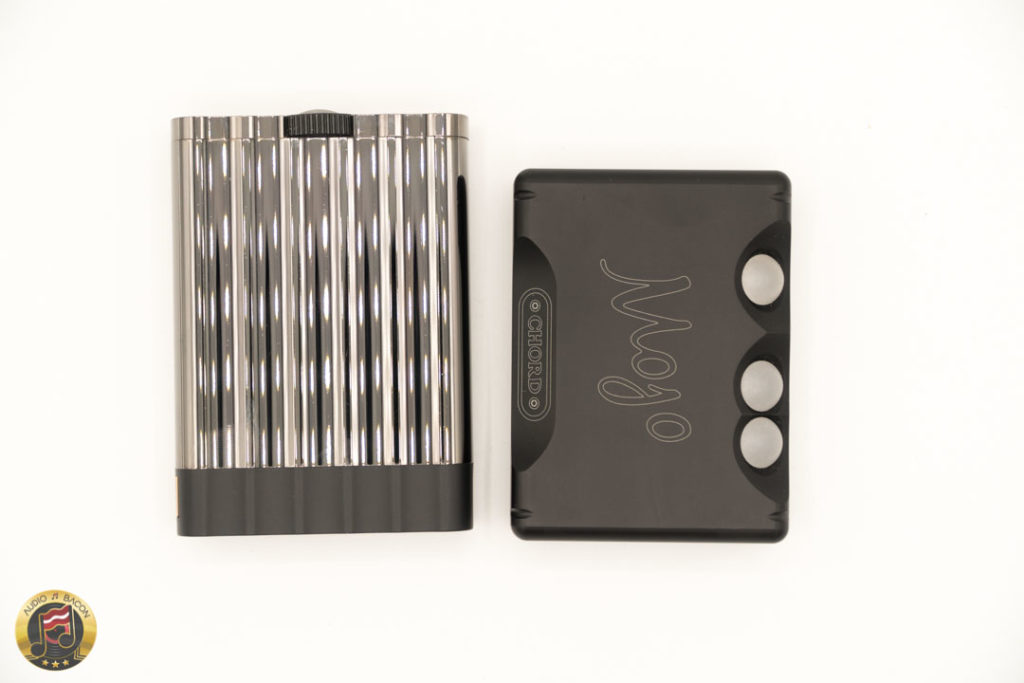
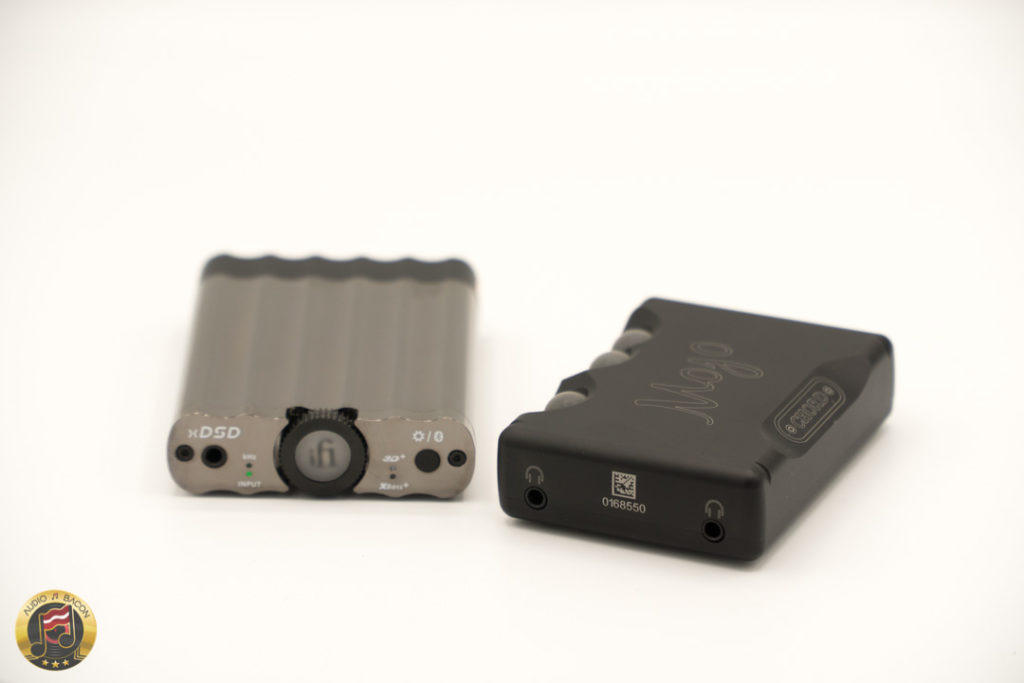


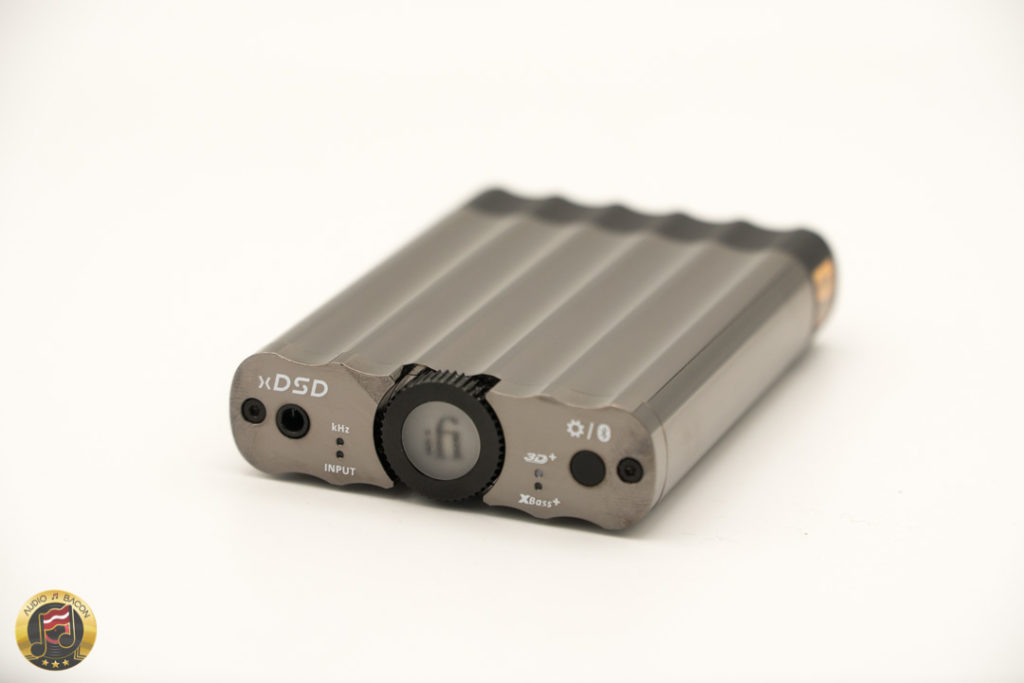


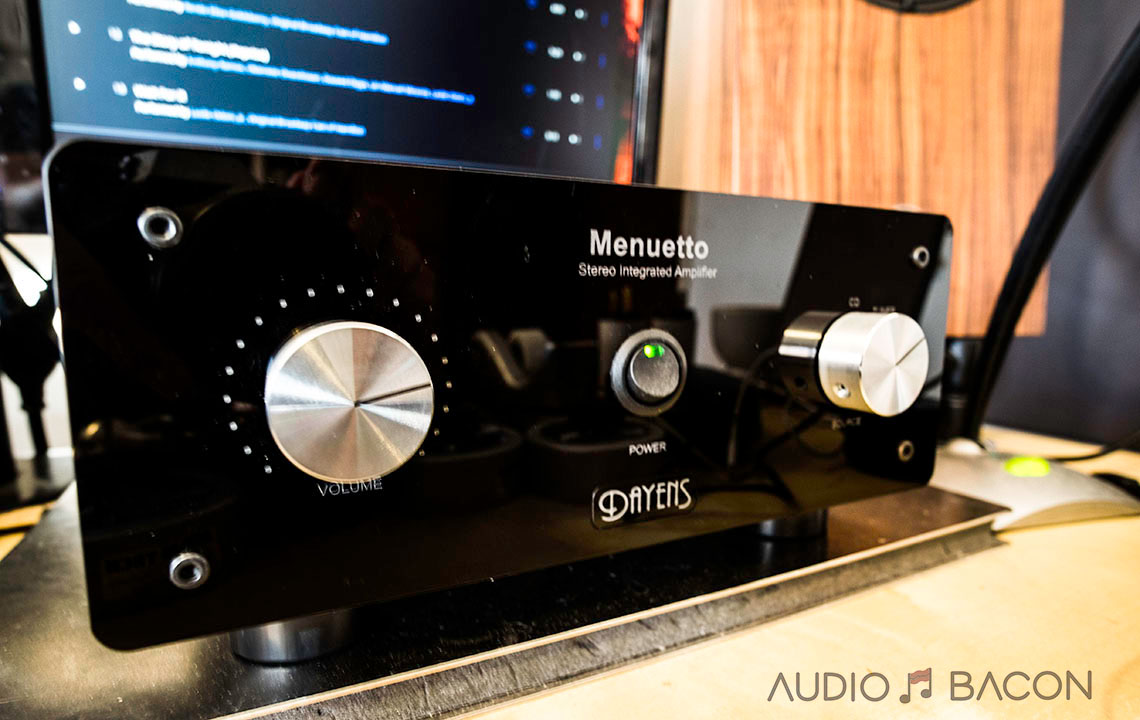

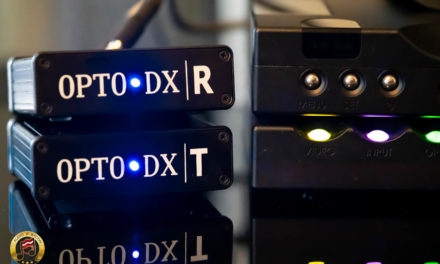


I initially liked xDSD very much, while listened flac rips from CD but very soon it turned out that xDSD badly compromised PCM rendering quality for the sake of MQA in 5.3. Is it just my problem? Like I wrote the same files are not problem for Centrance DACportable or Chord Mojo.
Revision 3: xDSD could not handle even PCM 24/192 with firmware 5.3C, gives clicks and noises. Very disappointing because CD resolution flacs sound better with 5.3 firmware. Contacted iFi – answer “it does”.
Revision 2: downgraded driver to 5.2 and it fixed the situation now it plays PCM files up to 384kHz perfect. I wish iFi would be more responsible in depicting the situation. Ruining good performance for the inconsequential MQA is total nonsense.
Revision: it is not able to handle correctly PCM files 384kHz (in spite of company’s statement that it could), what a disappointment! It makes clicks and noises. These files are not a problem at all for Centrance DACportable or Chord Mojo.
Ah, that’s unfortunate. I hope they’ll fix it soon!